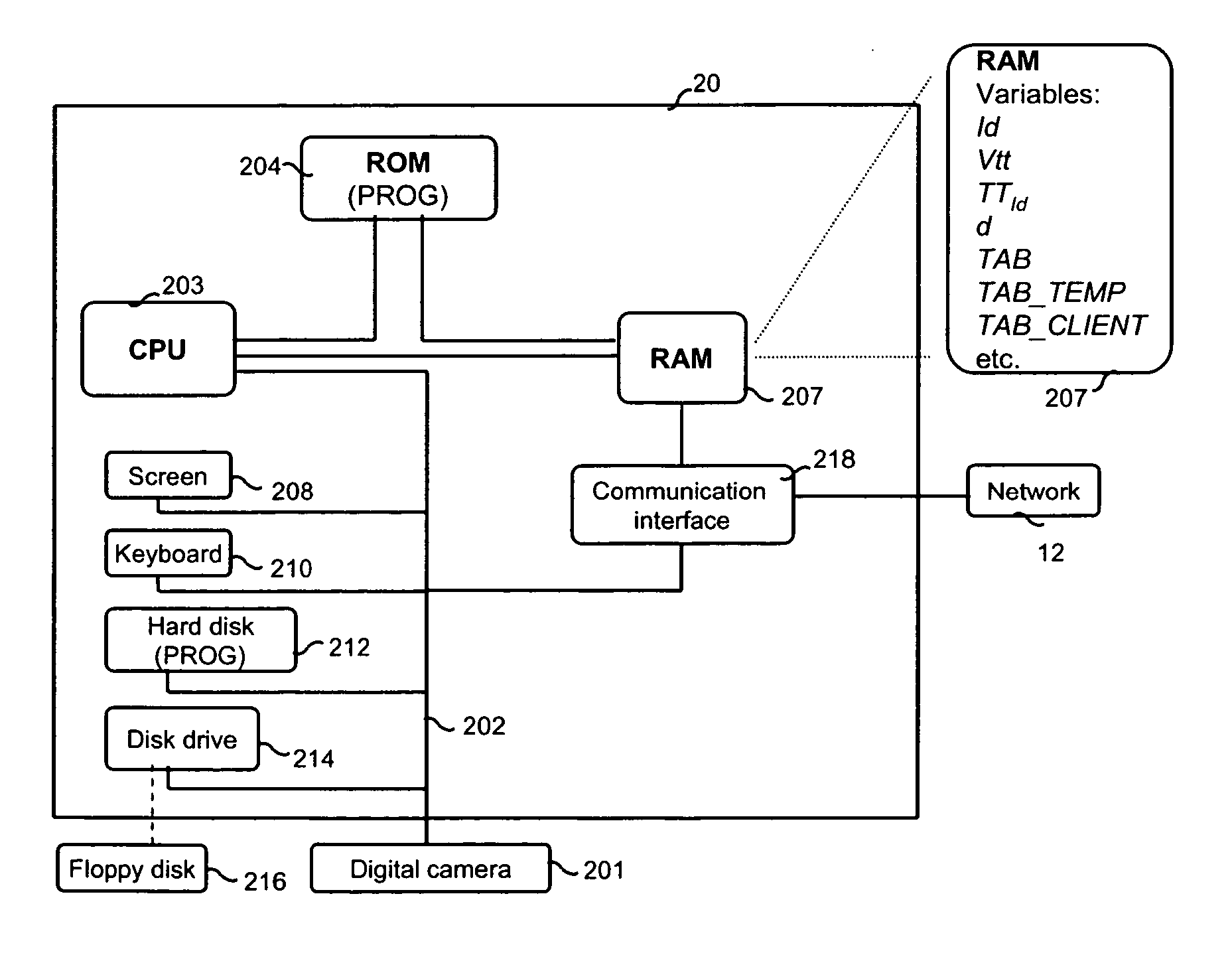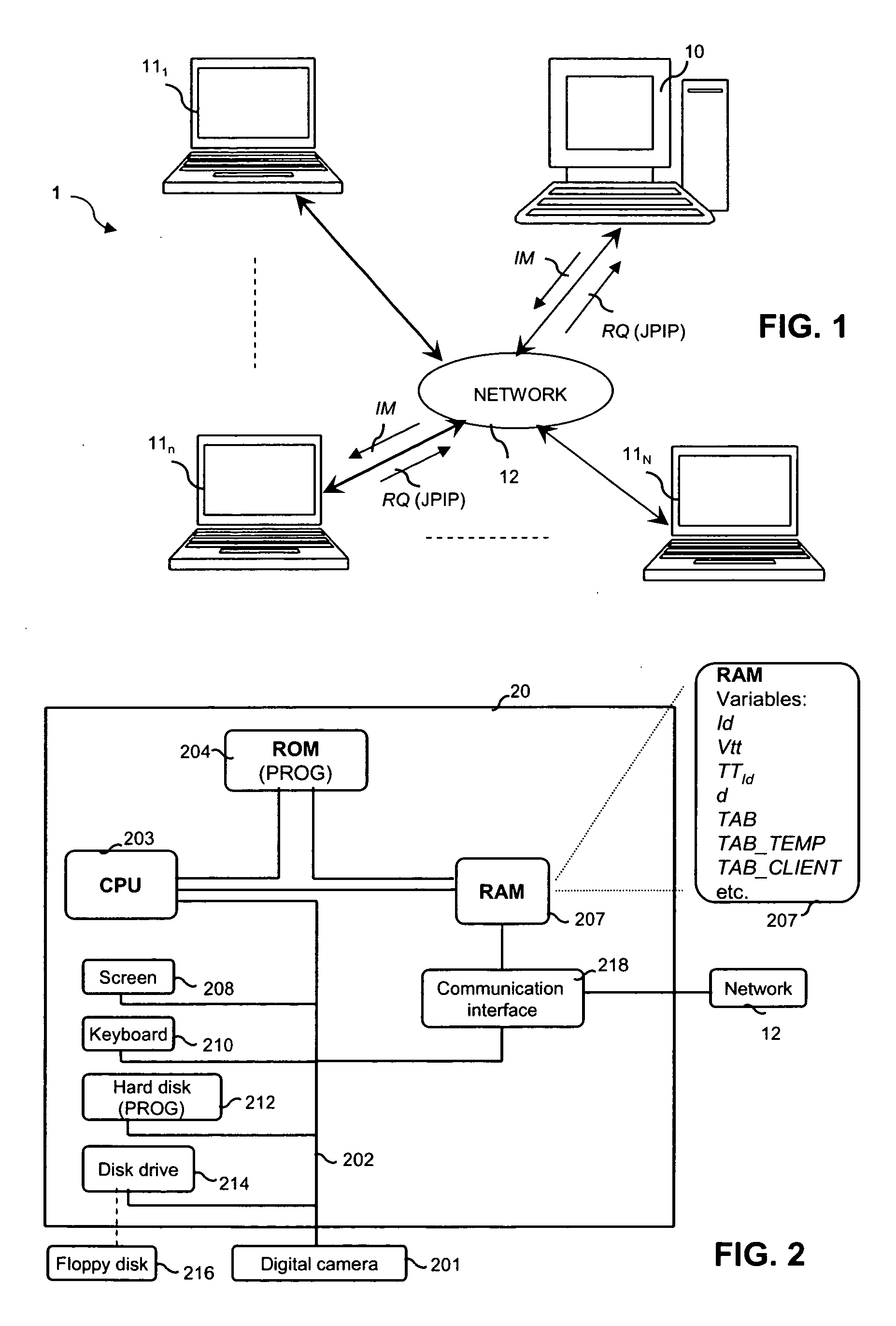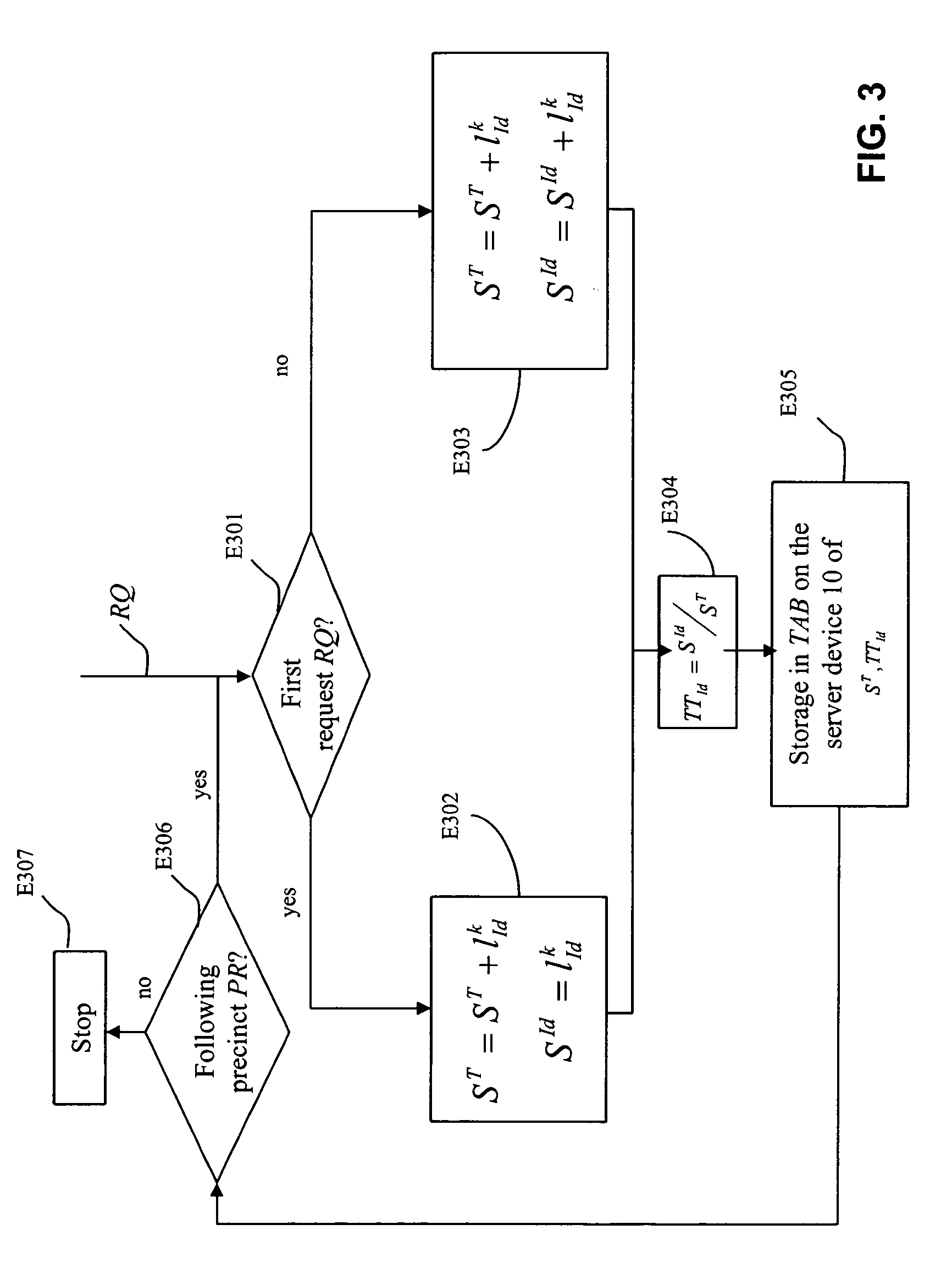Method and device for distributing digital data in particular for a peer-to-peer network
a peer-to-peer network and digital data technology, applied in the field of manipulation, transmission and display of digital images, can solve the problems of inability to allow suitable management, lack of reactivity of users, and inability to adapt to the needs of users, so as to reduce the coding cost of statistical data, and reduce the bit rate of statistical data
- Summary
- Abstract
- Description
- Claims
- Application Information
AI Technical Summary
Benefits of technology
Problems solved by technology
Method used
Image
Examples
Embodiment Construction
[0059] With reference to FIG. 1, the preferred embodiments of the methods and devices of the invention presented below are described in the general context of a telecommunications system according to the invention, designated overall by the reference 1, designed for the distribution of multiresolution digital images from a server device 10 to a plurality of client devices 111 to 11N.
[0060] The preferred embodiments of the invention are described below in the context of a client / server application for handling and displaying images. In this application, the server device 10 stores digital images IM in the JPEG2000 format and the client devices 111 to 11N can access these digital images IM by means of the JPIP protocol.
[0061] The reader can usefully refer to the following references in order to more completely understand the functioning of the methods and devices according to the invention, namely:
[0062] Reference [1]: JPEG2000, Part I, Final Draft International Standard (corrected...
PUM
 Login to View More
Login to View More Abstract
Description
Claims
Application Information
 Login to View More
Login to View More - R&D
- Intellectual Property
- Life Sciences
- Materials
- Tech Scout
- Unparalleled Data Quality
- Higher Quality Content
- 60% Fewer Hallucinations
Browse by: Latest US Patents, China's latest patents, Technical Efficacy Thesaurus, Application Domain, Technology Topic, Popular Technical Reports.
© 2025 PatSnap. All rights reserved.Legal|Privacy policy|Modern Slavery Act Transparency Statement|Sitemap|About US| Contact US: help@patsnap.com



